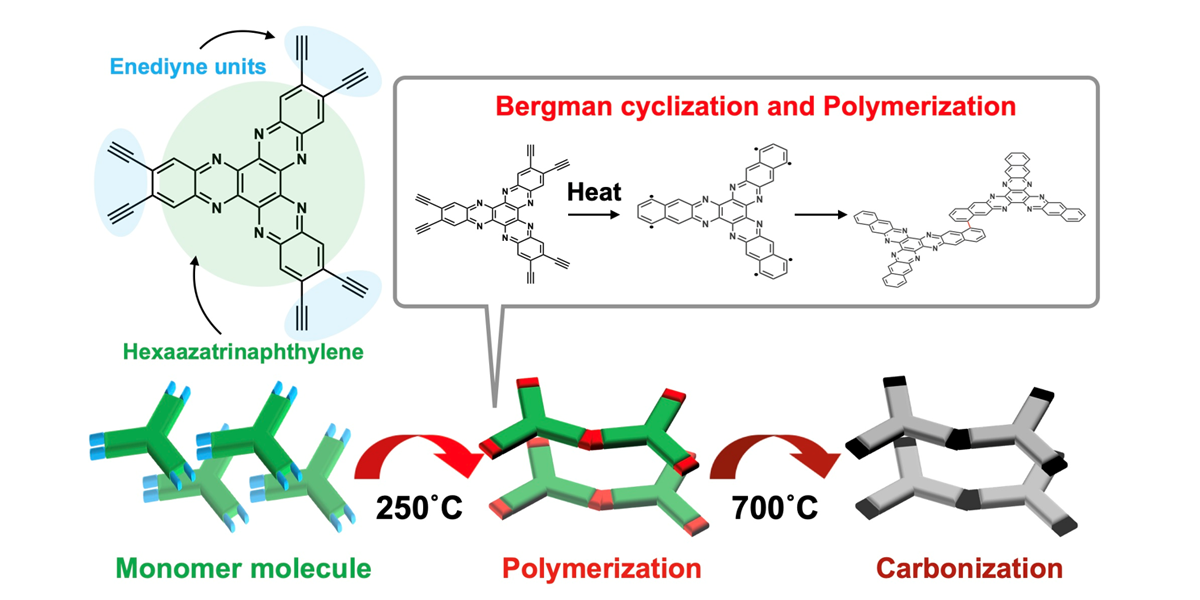Porous materials such as metal-organic frameworks and covalent organic frameworks synthesized by bottom-up methods (a method of building molecular frameworks from atoms, ions, and molecules, like building a castle with toy blocks) have attracted attention as new materials due to their design flexibility. However, it is not easy to achieve the chemical and thermal stability required for various applications for these materials. Ordered carbonaceous frameworks (OCFs) have emerged as promising new bottom-up materials with periodicity, thermal and chemical stability, and electrical conductivity. However, the number of examples of OCFs is limited at present due to the limited types of precursor molecules. Here, we designed a monomer molecule with enediyne functional groups and a hexaazatrinaphthylene backbone as a precursor molecule for synthesizing OCFs. We found that this monomer molecule forms a porous polymer and OCF by solid-state Bergmann cyclization. We found that the porous polymer can be used as an active material for sodium-ion batteries, and the OCF can be used as an electrode material for electrochemical capacitors.

